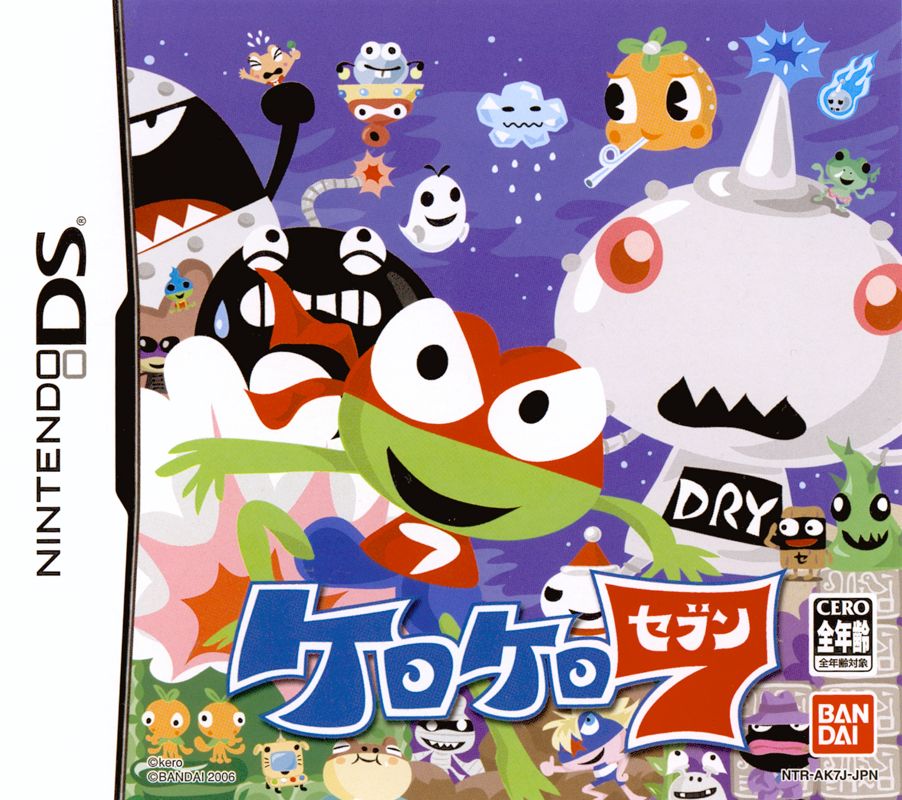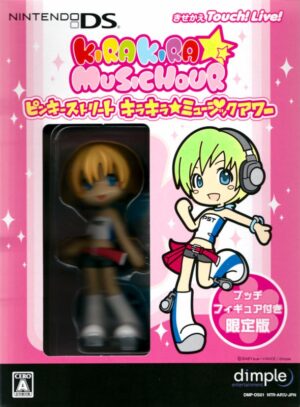Retro Replay Review
Gameplay
Kero Kero 7 delivers a unique blend of point-and-click adventure and touch-based mini-games that leverage the Nintendo DS’s hardware in creative ways. Players assume the role of Agent 7, one of seven members of the Kero Kero Agency, and navigate a series of tableau-style screens filled with interactive hotspots. The core loop revolves around using an assortment of spy gadgets—from rock breakers to fuse-lighters—all activated or manipulated via the touch screen. This approach keeps each puzzle fresh and engaging as you tap, drag, and even “scratch” your way through obstacles.
(HEY YOU!! We hope you enjoy! We try not to run ads. So basically, this is a very expensive hobby running this site. Please consider joining us for updates, forums, and more. Network w/ us to make some cash or friends while retro gaming, and you can win some free retro games for posting. Okay, carry on 👍)
Each tool in your arsenal serves multiple purposes, encouraging experimentation. For example, you might repeatedly tap a boulder to shatter it or flick the stylus like striking a match to ignite a fuse. One of the more memorable mechanics is the “blackboard scratch,” where you slide your stylus back and forth to simulate the grating noise required to lift heavy platforms. While these inputs are sometimes overly sensitive, they emphasize the tactile charm that the DS offers, making every success feel earned.
The game also includes a variety of optional spy utilities—voice recording, a stopwatch, drawing tools, and a sound effect generator—transforming Kero Kero 7 into a light-hearted spy toolkit. These extras won’t solve the main puzzles, but they add depth and replay value for younger players or those who enjoy digital playthings. Sharing your custom sound bites or agent data cards with friends via local wireless enhances the social aspect, though it’s admittedly a niche feature in today’s online-centric world.
Graphics
Graphically, Kero Kero 7 embraces a colorful, cartoon-inspired aesthetic that perfectly suits its whimsical tone. Character sprites are expressive despite their modest resolution, and backgrounds are richly detailed, giving life to the once-peaceful hamlet of Kerorinpo. Although the animation runs at a simple frame rate, the designers cleverly use keyframe pops and stylus effects—such as match sparks or flying debris—to inject kinetic energy into each screen.
The game’s color palette is bright and inviting, with lush greens and pastel hues dominating most scenes. Alien invaders stand out in contrasting shades of purple and teal, making it easy to identify threats and puzzle elements at a glance. Cutscenes and dialogue boxes are peppered with charming illustrations of Agent 7 and his comrades, each sporting distinct silhouettes and personality traits that come through even without full-motion animation.
One minor drawback is that resolution limitations occasionally lead to cluttered screens, especially when several interactive items accumulate in a single tableau. However, tooltips and a clean user interface mitigate confusion by highlighting usable objects. Overall, the graphics hit the right balance between functionality and style, creating a world that players will enjoy poking and prodding during every spy mission.
Story
The narrative of Kero Kero 7 is straightforward but engaging: the idyllic world of Kerorinpo has enjoyed peace thanks to the Kero Kero Agency, but when a sudden alien invasion strikes, Agent 7 must step out of retirement to save the day. This setup offers a playful contrast between the frog-like agents’ habitual downtime and the urgent resurgence of threats. The stakes feel appropriate for a first-time DS release, blending humor and heroism in bite-sized chapters.
Dialogue is light-hearted, leaning into spy-movie clichés with puns and frog-related humor. Agent 7’s internal monologue often breaks the fourth wall, guiding players with cheeky hints or self-deprecating remarks that defuse any frustration from tougher puzzles. Supporting agents occasionally radio in, offering backstory tidbits or tool upgrades, which helps flesh out the team without bogging down the pace.
While the plot doesn’t delve into deep conspiracies or character arcs, it serves its purpose: get players from one puzzle to the next while maintaining a sense of adventure. The ultimate showdown against the alien ringleader feels a bit abrupt, but the playful resolution and epilogue scenes celebrate your success with enough flair to satisfy younger audiences and casual gamers alike.
Overall Experience
Kero Kero 7 shines as a niche adventure that maximizes the Nintendo DS’s touch capabilities. Its blend of light puzzle-solving, touch-based mechanics, and collectible spy toys offers a refreshingly casual experience for those who enjoy hands-on interaction. The game’s pacing is well-tuned—missions last just long enough to feel rewarding without overstaying their welcome, and the optional extras encourage replay without being intrusive.
The title’s charm lies in its personality more than in any high-octane action. It’s well-suited for younger gamers or adults seeking a laid-back diversion, though seasoned puzzle fans may find some challenges too simple. Nonetheless, the sheer inventiveness of each touch-screen task keeps the experience lively. Local wireless features like sound-effect sharing and agent card exchanges add a social twist for DS owners meeting in person.
In sum, Kero Kero 7 is a delightful showcase of creative design around limited hardware, offering a warm, whimsical spy adventure. Its approachable puzzles, vibrant art style, and playful narrative create a cohesive package that’s easy to recommend, especially to those who appreciate charm and tactile engagement over sheer difficulty or length. For players looking to don a froggy spy suit and save Kerorinpo from extraterrestrial trouble, Agent 7 stands ready at your stylus tip.
 Retro Replay Retro Replay gaming reviews, news, emulation, geek stuff and more!
Retro Replay Retro Replay gaming reviews, news, emulation, geek stuff and more!




Reviews
There are no reviews yet.